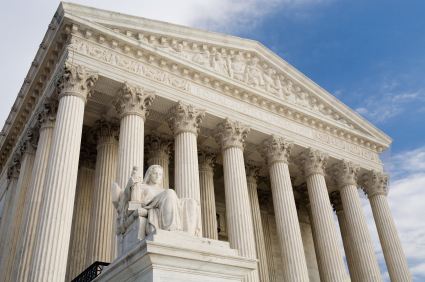In the past, U.S. Supreme Court justices have sided with the states in warrantless drug dog sniff searches. But this past week, they shifted directions on one Florida case, deciding that the police can’t use a drug dog at a home (even on the front porch) without a warrant. The difference between this case and previous ones? Location, location, location.
The police cannot, without a warrant based on probable cause, hang around on the lawn or in the side garden, trawling for evidence and perhaps peering into the windows of the home,” wrote Justice Antonin Scalia for the majority. “And the officers here had all four of their feet and all four of their companion’s, planted firmly on that curtilage – the front porch is the classic example of an area intimately associated with the life of the home.”
Scalia, and Justices Clarence Thomas, Ruth Bader Ginsburg, Sonia Sotomayor and Elena Kagan all sided with the defendant in the case of Joelis Jardines. Chief Justice Roberts, and Justices Breyer, Kennedy and Alito dissented.
 In this particular case, police and DEA agents arrived at the home of Joelis Jardines after receiving a tip that there might be a marijuana-growing operation there. Two officers and their K-9 approached the front door. When the dog sat at the door (an alert to the presence of drugs), police left and used his alert as justification for a warrant.
In this particular case, police and DEA agents arrived at the home of Joelis Jardines after receiving a tip that there might be a marijuana-growing operation there. Two officers and their K-9 approached the front door. When the dog sat at the door (an alert to the presence of drugs), police left and used his alert as justification for a warrant.
The trial court judge threw out the resulting case against Jardines (which ended up netting 179 marijuana plants), saying the evidence was the product of an unlawful search. An appeals court sided with the state. The Florida high court sided with the trial court judge as did the SCOTUS.
Prior to this case, justices have ruled in favor of warrantless drug dog searches as they pertain to things like vehicles and luggage. But, a home is a different story. There is a different expectation of privacy in a home.
Justice Kagan affirmed the majority opinion, writing, “”A drug detection dog is a specialized device for discovering objects not in plain view (or plain smell). That device here was aimed at a home – the most private and inviolate (or so we expect) of all the places and things the Fourth Amendment protects. Was this activity a trespass? Yes, as the court holds today. Was it also an invasion of privacy? Yes, that as well.”
This ruling definitely marks a positive one for 4th Amendment advocates. That amendment protects you and I from unreasonable searches and seizures. It, in effect, sets the boundaries that dictate where our privacy ends and the domain of the public and the government begins.
